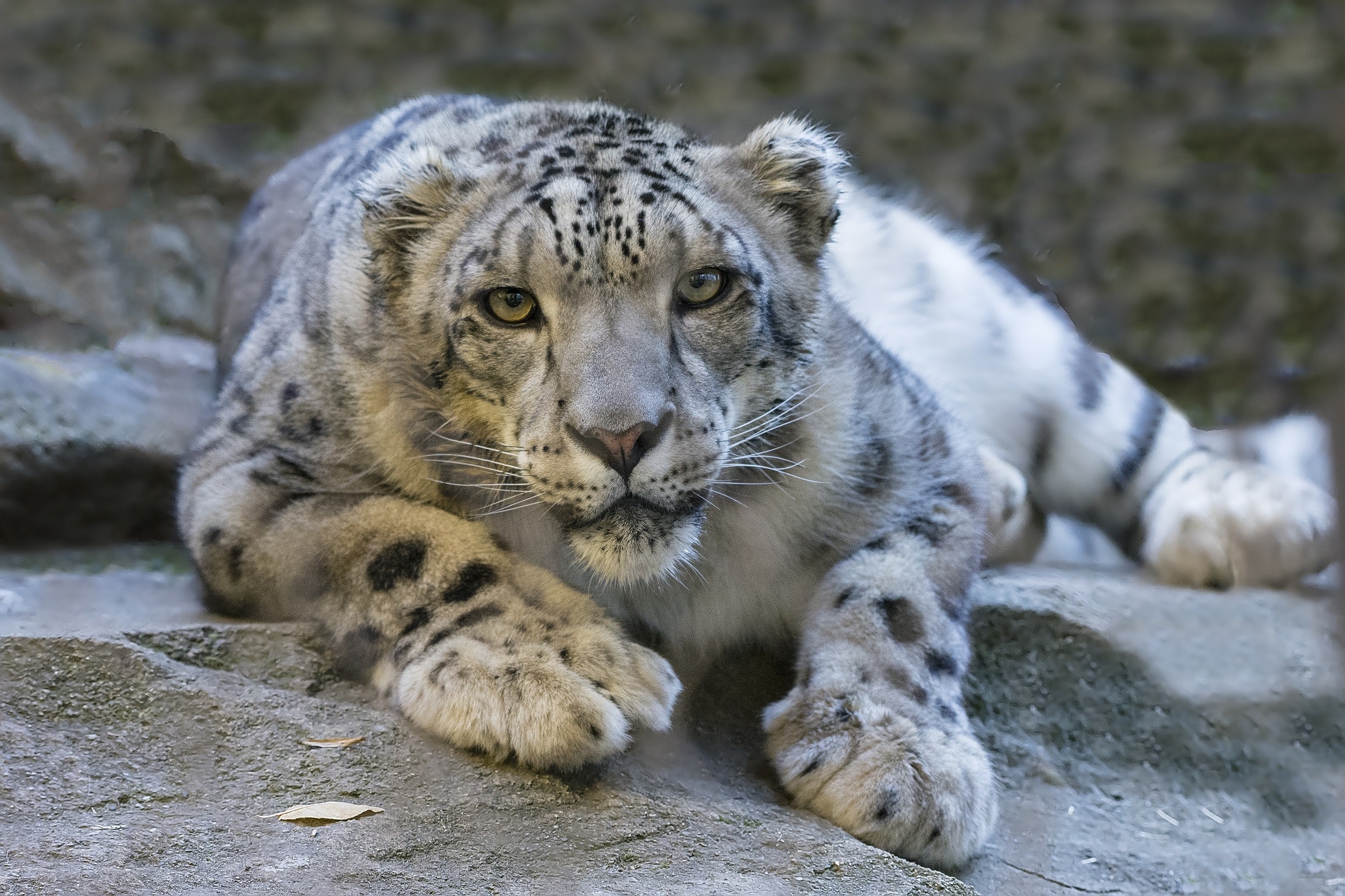The snow leopard is one of the cutest animals on Earth, but despite its adorable kitten look-like, this massive wild cat inhabits in some of the most unfriendly environments in the world. These majestic animals roam throughout the mountain regions in Asia, from Siberian mountains in Russia, to the Himalayas and all the way to China.

With temperatures frequently going bellow zero, this sounds like the toughest environment to live in, but the snow leopards are perfectly designed for such extreme condition. Their dense fur not only protects them from the cold, but it also offers the best camouflage. With the color of smoke and black spots, their coat makes them incredibly hard to spot. With such a perfect camouflage and a solitary nature, the snow leopard is among the most highly elusive animals in the world.
Weighing 60 to 120 pounds and 4 to 5 feet in size, the snow leopards are incredible jumpers due to their extremely powerful legs. The 36 inches long tail helps them to keep balance. Even they need vast territories to roam – mostly because the food source is harder to find on that altitudes, the snow leopards are extreme predators and they can easily take down a pray that’s three time their size.
🔥 The snow leopard. pic.twitter.com/etebygrM7o
— Nature is Lit (@Nature_Is_Lit) January 8, 2021
Unlikely the other big wild felines, the snow leopards don’t roar, but they make an inoffensive sounds known as ‘chuff.’ They’re very innovative when comes to human interaction, too. There had never been recorded any snow leopard attack on a human being. When they feel human presence, they just run away and seek to hide.
— Kingdoms (@kingdoms_t) January 8, 2021
Unfortunately, it is the human hand that turned these majestic felines into a vulnerable species. Deforestation, expansion of human settlement and poaching have caused a dramatic decline among their numbers. According to National Geographic, the snow leopard lost over 20% of its population in the last two decades. Climate change also plays its part in the declining of the species, because the rising temperatures means the loss of their habitat.
Thankfully, over the last few years some great conservation efforts have been made and many of their inhabiting regions have been declared protected areas!
(h/t: nationalgeographic)

